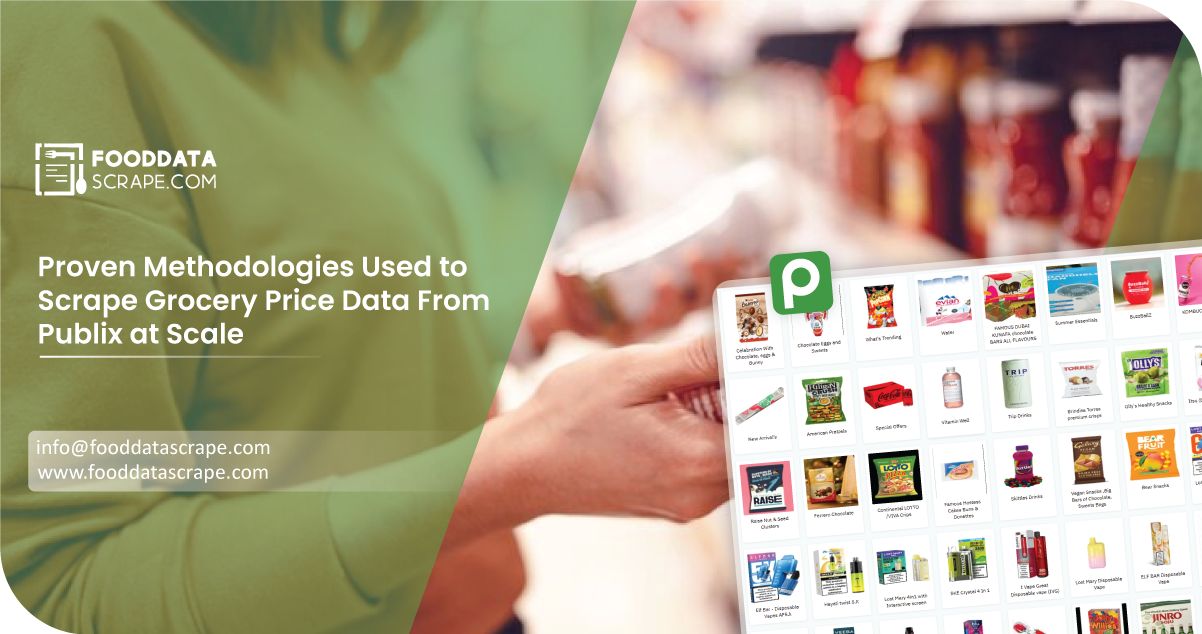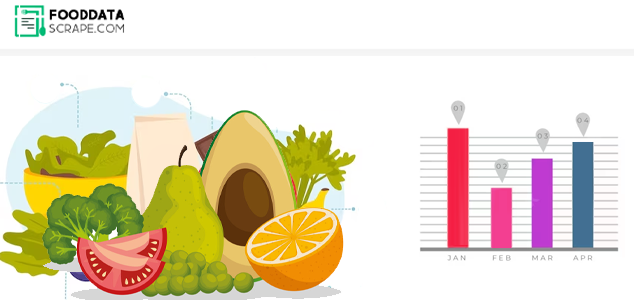The Client
The client is a consumer insights and analytics firm focused on retail pricing trends across major grocery chains. Their goal was to Extract Grocery Deals and Discounts Data From Publix to help their partners better understand market pricing and promotional strategies. They specifically needed to Extract Grocery Prices from Publix for thousands of SKUs across different store locations to monitor regional pricing differences and seasonal fluctuations. Manual tracking proved inefficient and error-prone, so they turned to automation for accuracy and scale. With our Publix Grocery Product Data Scraping solution, the client gained structured, real-time data, enabling detailed competitor pricing analysis and timely response to market changes. This data is now a core asset in their competitive intelligence reports.
Key Challenges
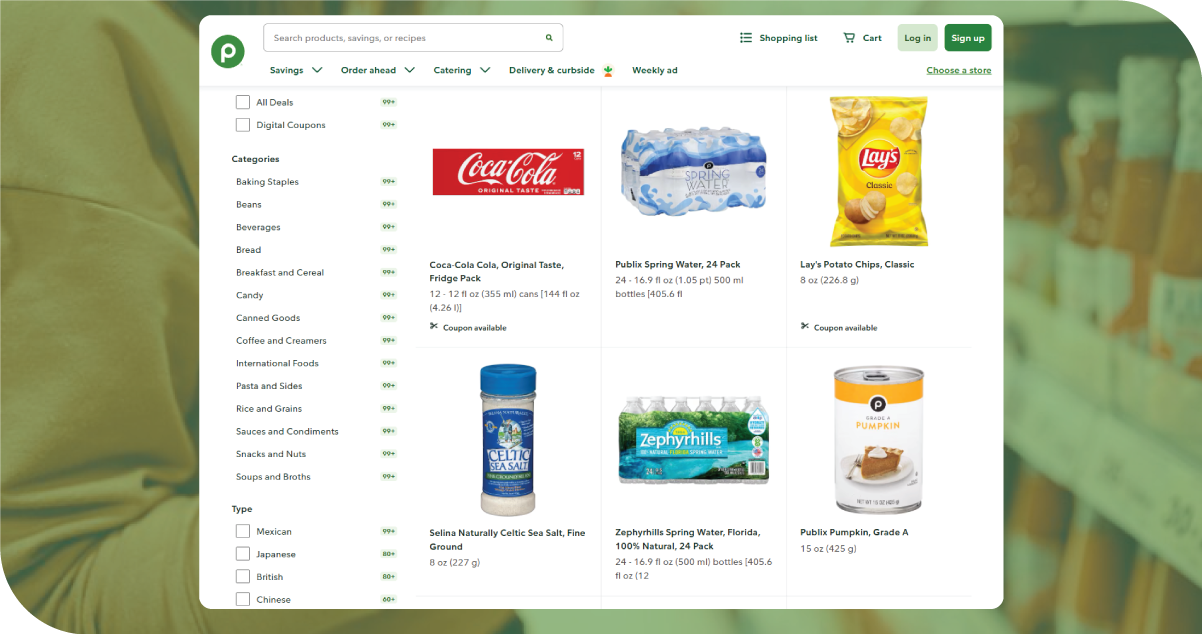
The client faced ongoing challenges maintaining a clean, up-to-date Grocery Item and Price Dataset From Publix. Publix frequently updated its website structure and product listings, which disrupted the client's manual data collection process. They could not keep up with the changes without automated scraping tools, leading to data gaps, inaccuracies, and unreliable price comparisons.
The client's internal team lacked the expertise and infrastructure to Scrape Online Publix Grocery Delivery App Data. They could not handle the scale required for collecting data across multiple locations, product categories, and delivery timeframes. This limitation made it impossible to generate meaningful insights or keep track of promotional pricing in real time. The client struggled to automate data extraction processes without dedicated Publix Grocery Delivery Scraping API Services. They relied on inconsistent manual efforts, which slowed reporting cycles and limited their ability to react quickly to market trends. This gap hindered their analytics capabilities and reduced the value they could offer to retail partners.
Key Solutions
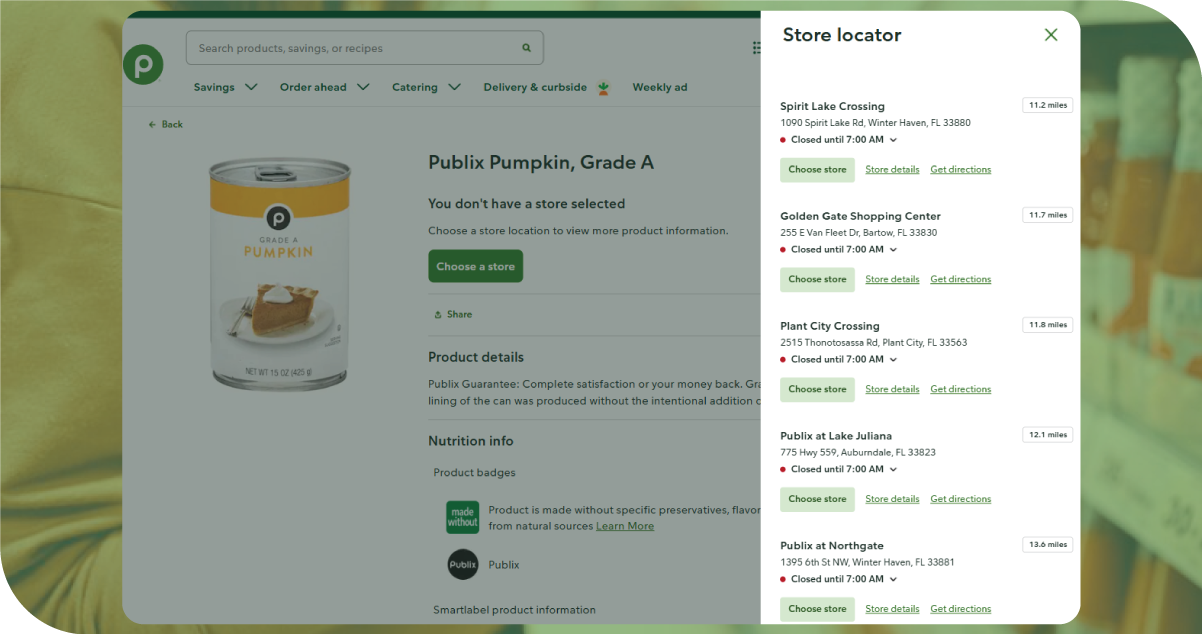
- We developed tailored Grocery App Data Scraping Services to collect accurate, structured data from Publix's online platform. This included extracting item names, prices, availability, and promotional details across various store locations, ensuring the client received clean, ready-to-use datasets.
- Our scalable solution for Web Scraping Quick Commerce Data enabled the client to monitor and compare pricing in real time across multiple ZIP codes and product categories. This automation replaced manual processes and significantly improved data collection speed and consistency.
- We deployed robust Grocery Delivery Scraping API Services, allowing the client to access real-time data feeds. This empowered their analytics team to deliver timely insights, track market trends, and stay competitive with minimal manual effort.
Methodologies Used
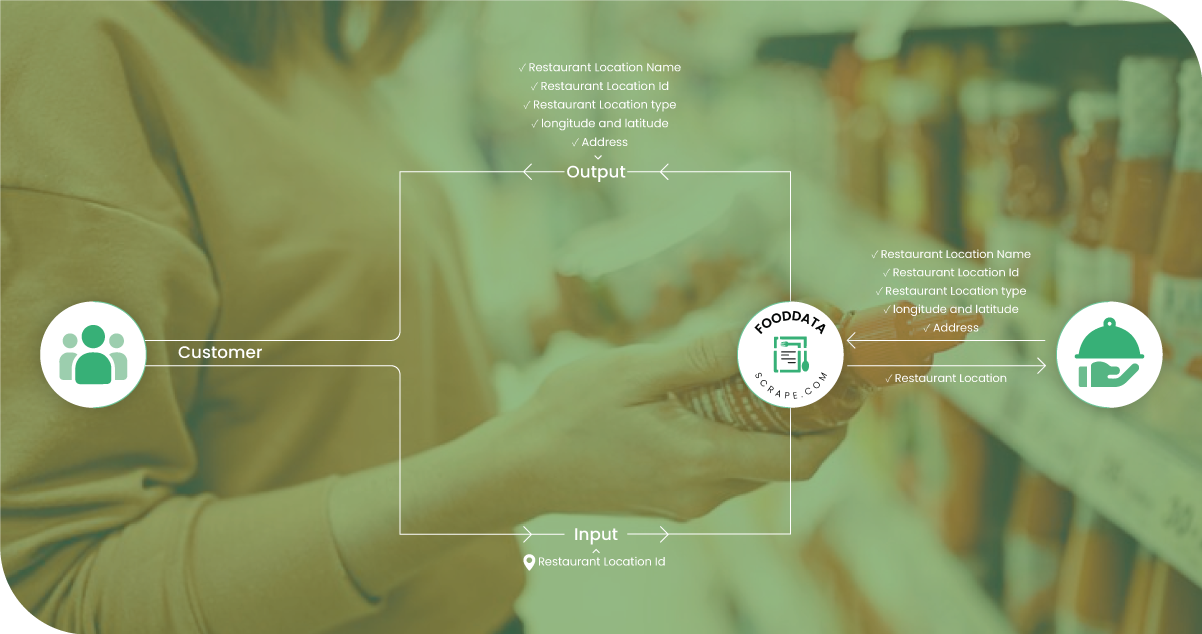
- Automated Extraction Across Multiple Locations: We implemented robust scraping mechanisms that could seamlessly extract product-level data across various Publix store locations. This allowed us to feed real-time data into the client's internal systems and support their Grocery Price Dashboard for accurate price comparisons.
- Normalization and Categorization of Product Data: All scraped information was cleaned and mapped into unified formats, ensuring consistency across product variants and categories. These processed feeds were integrated into the client's Grocery Price Tracking Dashboard to monitor changes effortlessly.
- Scheduled and On-Demand Data Collection: We enabled scheduled and on-demand scraping to keep the client's analytics team updated with the most recent price changes and deals. This flexibility ensured timely and reliable Grocery Pricing Data Intelligence.
- Geo-Targeted Data Scraping: By configuring crawlers to target different ZIP codes, we delivered hyper-local data that captured regional pricing variations, enriching their Grocery Store Datasets with valuable market insights.
- Data Access via Secure API Integration: To simplify data usage, we deployed APIs that provided seamless access to updated datasets, supporting their platforms with fresh inputs and enabling them to scale analysis using automated pipelines.
Advantages of Collecting Data Using Food Data Scrape
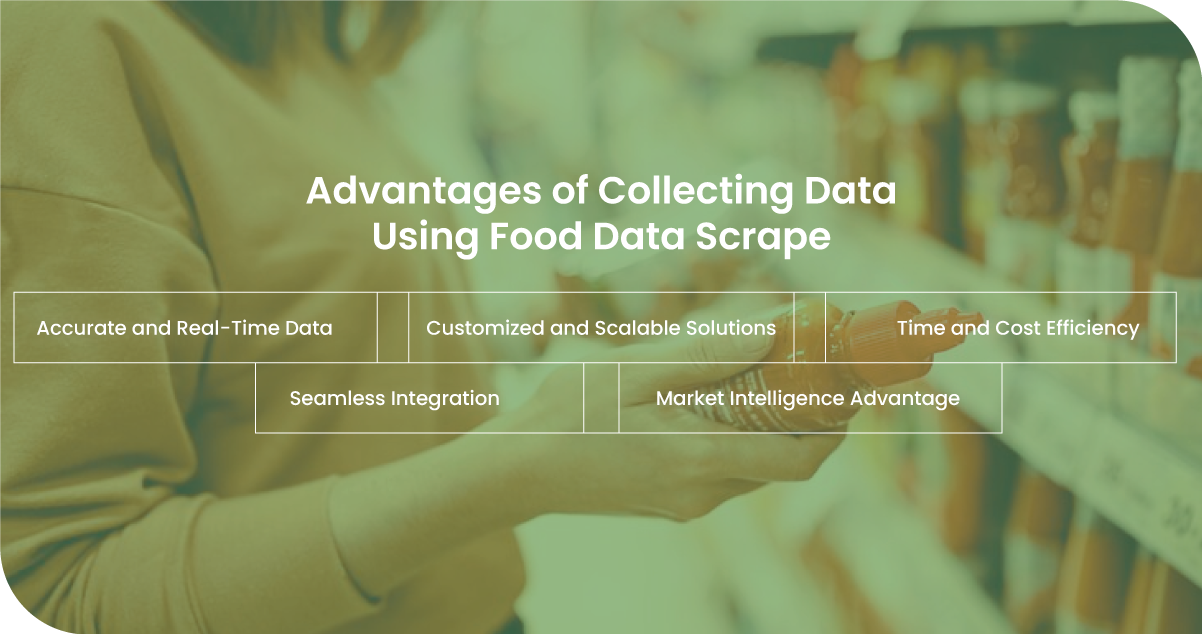
1. Accurate and Real-Time Data: Our services deliver up-to-date and highly accurate data, allowing clients to monitor price changes, stock availability, and real-time promotions across Publix and similar grocery platforms.
2. Customized and Scalable Solutions: We offer fully customizable scraping setups tailored to each client's needs. These setups can scale across multiple locations, product categories, and delivery platforms without compromising on performance.
3. Time and Cost Efficiency: By automating data extraction, clients save significant time and resources compared to manual tracking, enabling their teams to focus on analysis rather than collection.
4. Seamless Integration: Our clean, structured datasets and API-ready outputs effortlessly integrate with internal dashboards, BI tools, and analytics platforms.
5. Market Intelligence Advantage: With access to detailed product, pricing, and promotional data, clients gain a competitive edge through better forecasting, pricing strategy optimization, and trend analysis.
Client’s Testimonial
"Working with this team has completely transformed how we collect and analyze grocery pricing data. Their scraping solutions are fast, accurate, and easy to integrate with our internal tools. The insights we've gained have significantly improved our pricing strategy and market responsiveness. "
—Senior Retail Data Analyst
Final Outcomes:
The final results achieved were significant for the client. By gaining centralized insights, the client was able to obtain a comprehensive view of their operations across various regions, leading to better cross-functional collaboration and more informed decision-making. With real-time access to regional data, they could fine-tune their pricing and promotional strategies, driving a 10% regional growth. Additionally, the ability to monitor multiple markets simultaneously enabled a faster market response, reducing the time to implement new strategies by 40%. This proactive approach to market shifts allowed clients to stay ahead of competitors and adjust quickly to evolving consumer demands, ultimately enhancing their overall business performance. The combination of these factors helped the client achieve stronger market positioning.






















































































